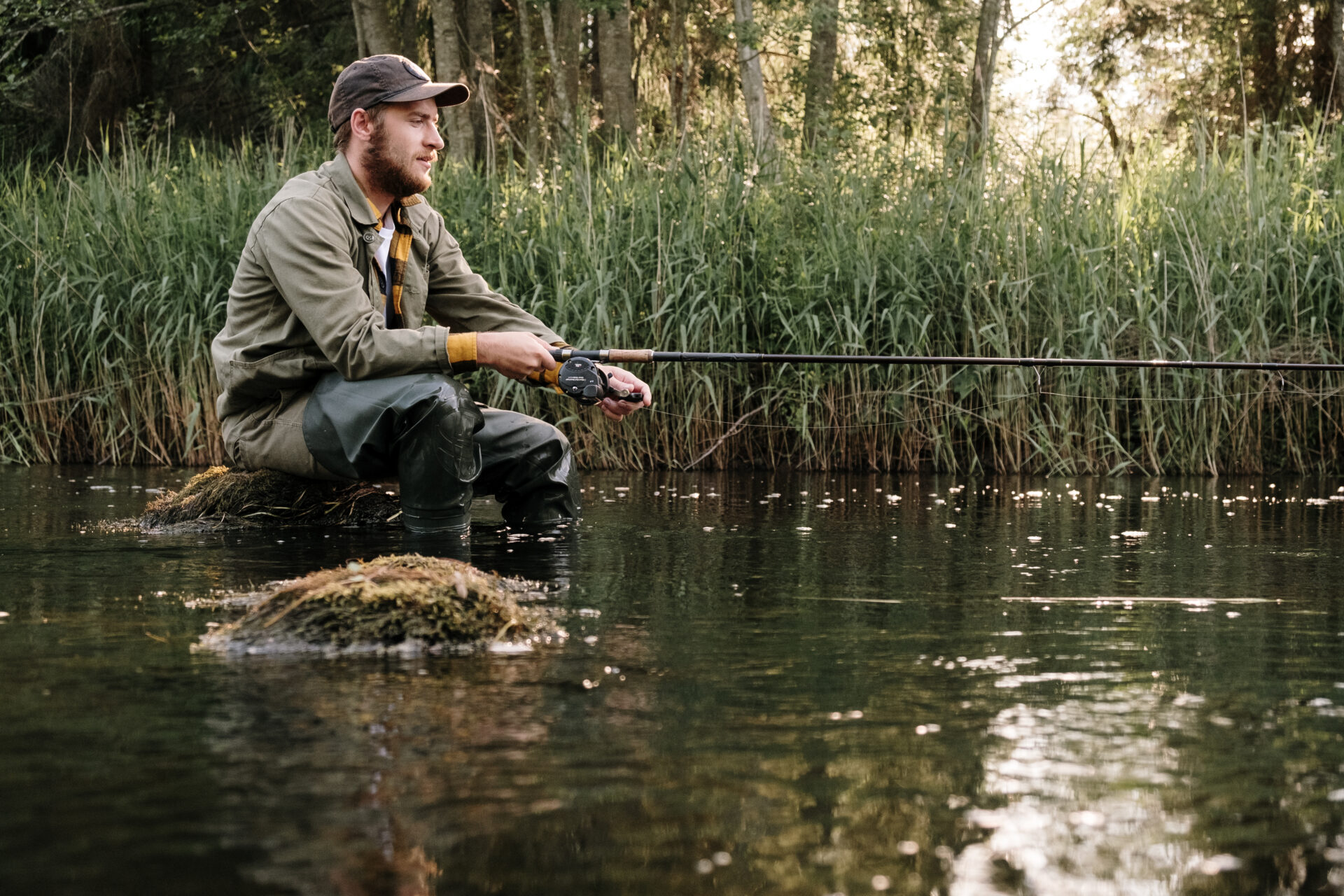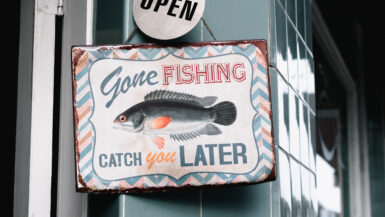Fishing for trout in spring creeks can be a fun and rewarding experience. Spring creeks offer anglers the opportunity to experience a diverse, beautiful and often rewarding type of trout fishing. Whether you’re new to the sport or an experienced angler, there are several key considerations when fishing for trout in spring creeks. In this article, we’ll provide some tips for successful trout fishing in spring creeks and discuss the tactics and techniques that will help you catch more trout. Read on to learn how to fish for trout in spring creeks.
Types of Spring Creeks
When it comes to fishing for trout in spring creeks, anglers must consider the different types of spring creek fisheries and understand the unique challenges specific to each. Spring creek fisheries refer to the environment in which trout live and the type of habitat they require. Understanding the different types of spring creek fisheries will help anglers determine the best way to catch trout in each environment.
Tailwaters
Tailwaters are spring creeks located downstream from a dam or other water source. These types of spring creeks are characterized by cold, highly oxygenated water which is beneficial for trout. Tailwaters typically have a good population of trout and offer ideal conditions for anglers to catch them. The trout in tailwaters can be found hiding in weed beds and eddies near the shoreline.
Freestone Streams
Freestone streams are spring creeks which originate from a mountain source, such as a melting glacier or a snow pack. These types of spring creeks offer colder, clear water, and can be fast or slow moving. The fish in freestone streams tend to hide in deeper pools or around rocks, and they often feed on nymphs and smaller baitfish.
Limestone Streams
Limestone streams are spring creeks which form when water runs over limestone rocks. These streams are generally clear, highly oxygenated, and relatively cool. The trout in limestone streams tend to be wary and difficult to catch, as they are used to these types of conditions and are very adept at hiding. To catch these trout, anglers should use subtle presentations such as dry flies or soft hackles.
Tributary Streams
Tributary streams are spring creeks which run into larger bodies of water, such as lakes or rivers. These creeks are often filled with smaller gamefish such as dace, chubs, and sculpins. As such, the trout in tributary streams tend to feed heavily on these smaller fish and can be caught using baitfish imitations, nymphs, or streamers.
No matter the type of spring creek being fished, all anglers should be sure to respect the environment and adhere to local regulations. Fishing for trout in spring creeks can be an enjoyable and rewarding experience, but it requires knowledge and patience. By understanding the different types of spring creek fisheries, anglers will be able to better target the trout and have a successful outing.
Trout Fishing Equipment
When planning to go trout fishing in a spring creek, it is important to have the proper equipment to ensure a successful and enjoyable experience. The right trout fishing equipment will depend on the type of trout being fished for and the waters they inhabit, but some items are essential for any trout fishing trip.
Essential Trout Fishing Gear
When it comes to trout fishing in spring creeks, the most important piece of equipment is a good fishing rod. A rod should be chosen based on the size and weight of the trout that are being targeted. A good rod for trout fishing in spring creeks should be light and relatively short in length, around 6.5 to 7.5 feet.
In addition to a rod, other important trout fishing supplies include reels, fishing line, leaders, floats, weights, hooks, and lures. Reels should be matched to the rod and should have a smooth drag system that allows good line control. Fishing line should also match the rod and reel, with some anglers opting for lighter lines for smaller trout. Leaders should be appropriate for the size of the trout being targeted, usually 8 lb or lighter. Floats, weights and hooks can be chosen to match the type of bait being used.
Live Bait and Lure Options
Live bait is a popular option for trout fishing in spring creeks and should be chosen based on the type of trout being targeted. Popular live baits include worms, crickets, grasshoppers and minnows. Lures can be used to target trout in spring creeks, and the type of lure will depend on the conditions of the area. Popular lure options include spinners, spoons, jigs and soft plastics.
Other Fishing Equipment Considerations
In addition to the trout fishing supplies mentioned above, there are other pieces of equipment that anglers may find helpful when fishing in a spring creek. Waders help protect against the cold water, while polarized sunglasses allow anglers to spot trout in the water more easily. A tackle box or fishing vest is essential for storing tackle and bait, and a net can be handy for safely landing trout.
By bringing the right trout fishing equipment to a spring creek, anglers can maximize their chances of catching trout. By equipping themselves with the correct gear, trout fishing in a spring creek can be a rewarding and enjoyable experience.
Best Trout Baits for Spring Creeks
Before you plan to fish for trout in spring creeks, it is essential to have the right supplies on hand. You will need a good quality fishing rod, reel, line, and lures. You should also bring along a pair of polarized sunglasses to reduce the glare of the sun. A net or useful to be able to land your catch safely and with minimal harm.
Choosing the Right Trout Bait for Spring Creeks
When it comes to trout fishing in spring creeks, choosing the right bait can make a huge difference. The best trout baits for spring creeks are usually small. Trout usually feed on worms, grubs, and a variety of insects. You can also use small lures such as spinners, spoons, and jigs. When fishing with lures, make sure they are small enough that they do not scare away the trout.
Tips on Luring Trout in Spring Creeks
If you want to be successful at catching trout in spring creeks, there are a few things you should keep in mind. First, you should try to cast your line in the slower sections of the creek. Trout prefer slower waters because that is where they can find food easier. It is also a good idea to try to cast close to the shore or along the edges of the creek. This is because trout are more likely to be in these areas due to the cover that they provide.
In-Depth Look at Popular Trout Baits in Spring Creeks
When it comes to trout baits in spring creeks, worms are usually the top choice. Worms are usually the easiest bait to find and use, although they may take a bit of practice to get used to. Another popular bait for trout fishing in spring creeks is PowerBait. PowerBait is a specially formulated bait that is designed to float in the water and attract trout. Grubs, mealworms, and other insects can also be used as bait in spring creeks. When fishing with lures, it is important to use the smallest size possible. Small spinners, jigs, and spoons are all great choices for trout in spring creeks.
Understanding the Habits of Trout in Spring Creeks
To be successful at trout fishing in spring creeks, it is important to understand the behavior of trout. Trout usually feed during the morning and evening hours, so that is the best time to try and catch them. Trout also prefer colder waters and will often be found in deeper sections of the creek. Trout also like to hide in areas of cover and structure, so it is important to keep an eye out for these areas when fishing.
Conclusion
Fishing for trout in spring creeks can be a great way to enjoy the outdoors. To be successful, it is important to have the right supplies and choose the right baits. Worms, grubs, and PowerBait are all good choices for trout baits in spring creeks. It is also important to be aware of the habits of trout and try to cast near shorelines and areas of cover and structure. With patience and practice, you will be able to catch some trout in spring creeks.
Where to Find Trout in Spring Creeks
Fishing in a spring creek offers many advantages to anglers in search of trout. The smaller creek environment, with its rising water levels, yields more efficient performance with less drag on the line. Also, fishing in spring creeks provides anglers with a greater chance of success since the smaller channels offer more of a challenge to catch the trout due to their camouflaged habitat.
Knowing the Spring Creek Habitat
In order to increase one’s chances of catching trout in a spring creek, it is important to understand the habitat of the area. Trout often inhabit the cold, deep pools found in spring creeks. Additionally, they take refuge among the moss and vegetation along the creek’s banks. Therefore, it is important for anglers to keep an eye out for these types of areas as they explore a spring creek.
Best Time for Trout Fishing in Spring Creeks
Trout fishing in a spring creek varies depending on the season and location. Generally, the best time to catch trout in spring creeks is in the early morning and late evening when the light is at its dimmest. Additionally, the summer and spring months tend to be the best time to fish, due to the warmer water temperatures and greater insect activity, both of which attract trout.
Types of Lures and Bait for Trout Fishing in a Spring Creek
When looking for trout in a spring creek, anglers should use lures such as crankbaits, spinners, and spoons. Additionally, insects such as worms and grasshoppers can be used as bait to catch trout. It is important to remember to use the right size of lure or bait in order to target the trout successfully.
Tips for Fishing Trout in a Spring Creek
When fishing for trout in a spring creek, anglers should use light tackle, such as a spinning rod and reel combo, to help them cast at greater distances with more accuracy. Additionally, it is important to periodically change lures or bait when fishing to ensure the trout are not spooked. Finally, to maximize chances of success, anglers should fish the deeper pools of the creek for the most activity.
Where to Find Trout in Spring Creeks
When trying to locate trout in a spring creek, anglers should look for riffles, pools, and runs. Riffles are shallow areas of the creek with strong currents that are often teeming with trout. Pools, on the other hand, are deeper areas of the creek where the trout can take refuge from the swift currents of the riffles. Lastly, runs are areas of moderate flow and depth, making them ideal locations for trout to feed. With the right gear and knowledge of the creek’s terrain, anglers are sure to have a successful fishing experience in a spring creek.
Reading the Water for Trout
Fishing for trout in spring creeks can be an exciting and productive endeavor when done correctly. When you understand trout habits, reading the water – or assessing the trout’s environment – is essential if you want to catch them. Knowing what to look for will help you find the best spots to cast.
Recognizing Trout Habitats
Trout prefer areas with cooler water and plenty of oxygen. When scouting a spring creek, look for areas with vegetation, shade, and slow-moving water. During the warmer months, trout will seek out pools, deep or undercut banks, or areas with overhanging vegetation to find relief from the heat.
Ripple and Seams
Ripple and seams are two of the most important indicators to look for when reading the water for trout. Ripples form as the current flows around obstructions and create areas where food is likely to accumulate. Trout will often feed in these regions, so be sure to pay close attention to the water’s surface. Seams, on the other hand, are created where two different water depths and currents collide. Trout love feeding in these areas, so keep an eye out for them.
Natural and Man-Made Structures
Keep an eye out for natural and man-made structures in your search for trout on spring creeks. Natural structures like logs, rocks, and boulders can create eddies or deep pools, which are excellent areas to target. Man-made structures, such as bridges and dams, also provide cover and protection for trout.
Subsurface Observations
Before you start fishing, take a moment to observe the underwater environment. Look for the type of substrate, trees and vegetation, and aquatic insects that are present. Trout prefer certain types of habitats, so familiarizing yourself with the water’s characteristics and the types of food available will help you narrow down the best spots to fish.
Finding Trout by Reading the Water
Reading the water correctly is essential if you want to successfully fish for trout in spring creeks. By recognizing the various aspects of a trout’s habitat, you can identify the best spots and be one step closer to catching your limit.
Recommended Techniques for Trout Fishing in Spring Creeks
Fishing for trout in spring creeks can offer some of the most rewarding experiences for any angler. Before you start, it is important to understand that spring creeks are fragile systems and all anglers should approach them with respect. Before casting, do your research and find out what type of trout are native to the creek and how they spawn. Be aware of state and local regulations, as many areas will restrict certain aspects of fishing such as the use of live bait or certain types of lures. Also, note that the water level may vary greatly throughout the seasons, so take care to read up on the creek before you go.
Choose the Right Equipment for Trout Fishing in Spring Creeks
Naturally, the right fishing equipment is essential for successful trout fishing in spring creeks. Fly rods and reels, hand-tied flies, and all of the necessary supplies are necessities. As the trout are small, lightweight rods and reels are essential in order to make quick casts. There is no one-size-fits-all approach, so you should also always select the right sizes and types of flies when fly-fishing. Smaller flies are ideal for spring creek trout fishing.
Location and Presentation Are Key
When fly fishing in spring creeks, your choice of location and presentation are the two most important factors. Pay close attention to the shape of the creek and how the current flows. This will help you find the best locations to target trout. Additionally, the presentation of the fly is a key factor. Make sure that you have the right amount of weight on the fly line and that the fly lands softly in the water. Experiment with different techniques such as upstream casting, downstream casting, and slow or fast retrieves.
Be Stealthy
Since trout in spring creeks are usually quite spooky and easily startled, it is important that you approach their habitat with a sense of caution. Move slowly and quietly, wear neutral colors such as olive and brown that don’t stand out, and try to stay low. You should also avoid making sudden movements or loud noises that could scare the fish away.
Understand the Behavior of Trout in Spring Creeks
Finally, it is essential to understand the behavior of trout in spring creeks in order to be successful. Observation is key and you should be aware of the type of food the trout are feeding on, such as insects, worms, fish eggs, and other small prey. Additionally, be aware of any changes in the weather, water flow, and light levels, as all of these can affect the behavior of the trout. With a bit of patience and the right strategies, you should be able to catch some nice trout in spring creeks.
Conclusion
Fishing for trout in spring creeks can be a rewarding and enjoyable experience. With the right preparation and practice, any experienced angler can find success in these unique and beautiful creeks. By understanding the behavior of trout in these creeks, selecting the right lures and flies, and practicing the proper casting technique, you will be able to maximize your chances of success when fishing in a spring creek. With a little practice and patience, you can become an expert on catching trout in spring creeks.





Leave a reply